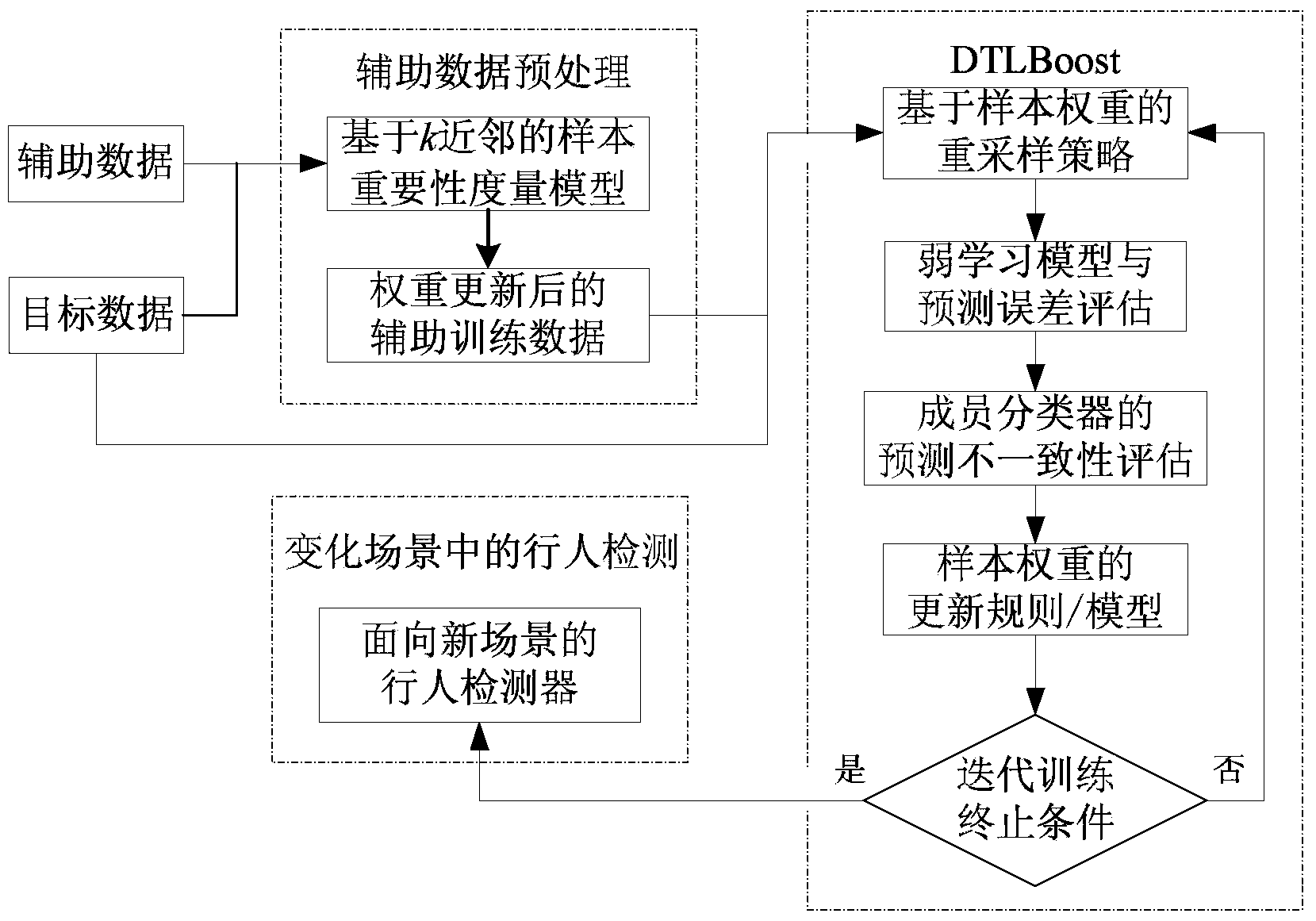Far infrared pedestrian detection method for changed scenes
A pedestrian detection and detection method technology, applied in the field of pedestrian detection, can solve problems such as inability to process or collect pedestrian patterns, difficulty in ensuring effective identification of pedestrian patterns, and difficulty in ensuring the reliability of pedestrian classifiers, so as to avoid over-fitting problems and avoid The effect of negative transfer phenomenon
- Summary
- Abstract
- Description
- Claims
- Application Information
AI Technical Summary
Problems solved by technology
Method used
Image
Examples
Embodiment Construction
[0026] The detailed operation process of the embodiment is given below in conjunction with the drawings. The embodiments shown in the drawings are based on the technical solution of the present invention, and the embodiments described in the drawings belong to, but are not limited to, the protection scope of the present invention. It should be pointed out that the following are only examples, and those skilled in the art can refer to the prior art if there are symbols and processes that are not specifically described.
[0027] The overall process of the detection method of this example is as follows figure 1 Shown.
[0028] (1) Preparation of training data
[0029] All training samples are taken from real far-infrared videos. Most of the training samples are obtained from historical far-infrared videos to form auxiliary data (set as m). Only a few training samples are obtained from new scene videos. Compose target data (set to n, and n<
PUM
 Login to View More
Login to View More Abstract
Description
Claims
Application Information
 Login to View More
Login to View More - R&D
- Intellectual Property
- Life Sciences
- Materials
- Tech Scout
- Unparalleled Data Quality
- Higher Quality Content
- 60% Fewer Hallucinations
Browse by: Latest US Patents, China's latest patents, Technical Efficacy Thesaurus, Application Domain, Technology Topic, Popular Technical Reports.
© 2025 PatSnap. All rights reserved.Legal|Privacy policy|Modern Slavery Act Transparency Statement|Sitemap|About US| Contact US: help@patsnap.com



